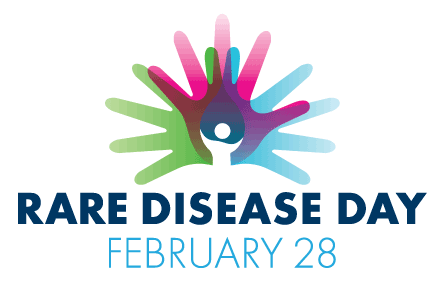The Importance of Fundraising for Rare Diseases

There are roughly 8,000 rare diseases and disorders currently impacting millions of people around the globe. In honor of those impacted, February 28th marks Rare Disease Day, the one day a year that those fighting a rare disease have their time in the spotlight to share their journey. Each year the Rare Disease Day initiative focuses on a specific theme, this year’s being the idea of 'bridging health and social care'. By highlighting the long-established challenges rare disease patients face every day, we hope to spread awareness and make their voices heard.
It is only through research that necessary, and lifesaving, cures will be found. Unfortunately, this research requires a great deal of funding - which is just as equally rare.
The funds allocated for medical research and medication is given to diseases that impact a larger number of patients, leaving nearly 1.2 million Australians to fend for themselves. As a result, the lack of funding can lead to a delayed diagnosis and difficulties accessing care and treatment including clinical trials, and heavy financial burdens.
One example of a rare disease that continues to challenge oncologists is malignant mesothelioma cancer. There are an estimated 600 Australians diagnosed with new cases of pleural mesothelioma each year, with men three times more likely to develop this disease than women. The costs associated with the disease are astronomical - patients often accrue millions in medical debt throughout their course of treatment. While there are viable options for those diagnosed with mesothelioma, such as compensation in a legal setting, many suffering with a rare disease may not have that choice.
Fortunately, fundraising efforts can be leveraged to fill the gaps left within health insurance. Each rare disease has dedicated advocacy groups that that work tirelessly to raise money in hopes for improved treatment and even cures. Nowadays people are taking matters into their own hands and creating their own fundraisers to make a difference. This can be done all year long and those wanting to get involved can spotlight any disease, cause, or movement of their choice.
In addition to fundraising, spreading awareness is key. Last year, we saw just how successful the role of social media can be in terms of fundraising. The United States developed the #ShowYourRare campaign, which encouraged people to paint their faces in solidarity to those who are battling a rare disease. It was a fun and lighthearted way spread a serious and important message to the public. The more that people are made aware and educated on the impact of rare diseases, the more likely that crucial resources will become available for patients and their families.
Fundraising and awareness events dedicated to rare diseases take place frequently throughout the country. For more information on Rare Disease Day events and how to get involved in your area check out the Rare Disease Day website.
Join the movement today and be sure to #ShowYourRare!
Fundraise for someone you know with a rare disease at mycause.com.au or find a rare disease charity you care about.
Never be ashamed of a scar. It simply means you were stronger than whatever tried to hurt you. - Unknown
Written by Emily Walsh - the Community Outreach Director at the Mesothelioma Cancer Alliance. Her role is to connect the alliance in different relevant online communities in order to help raise awareness around the dangers that asbestos still poses today and to help prevent future outbreaks of mesothelioma cancer.
- Mesothelioma Cancer Alliance Facebook Page: https://www.facebook.com/MesotheliomaCancer/
- Mesothelioma Cancer Alliance Twitter Page: https://twitter.com/CancerAlliance